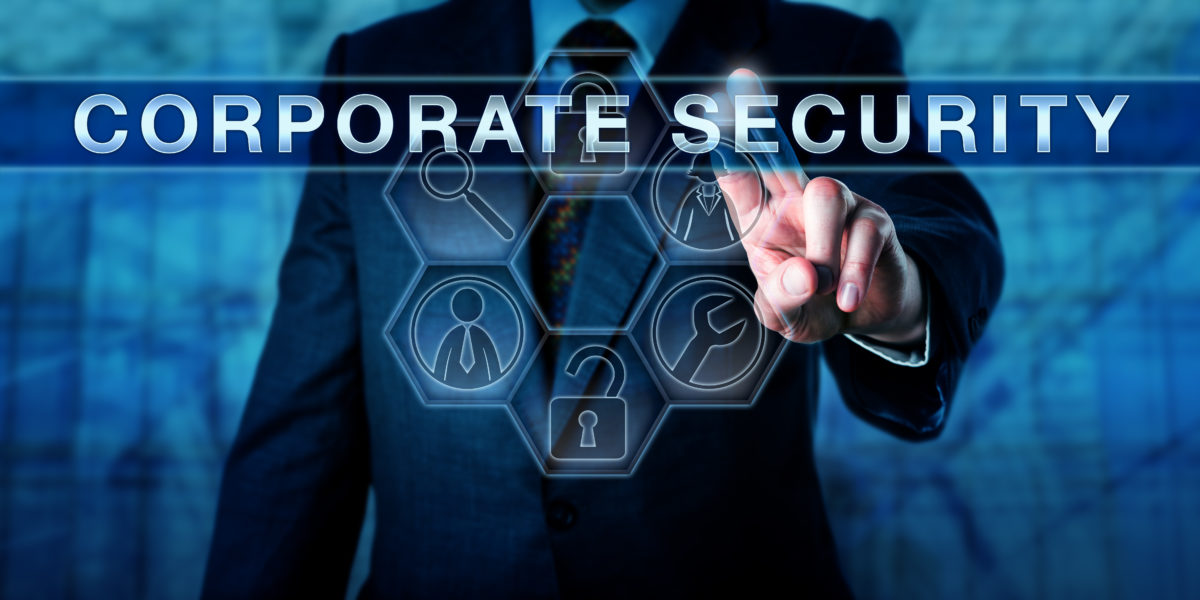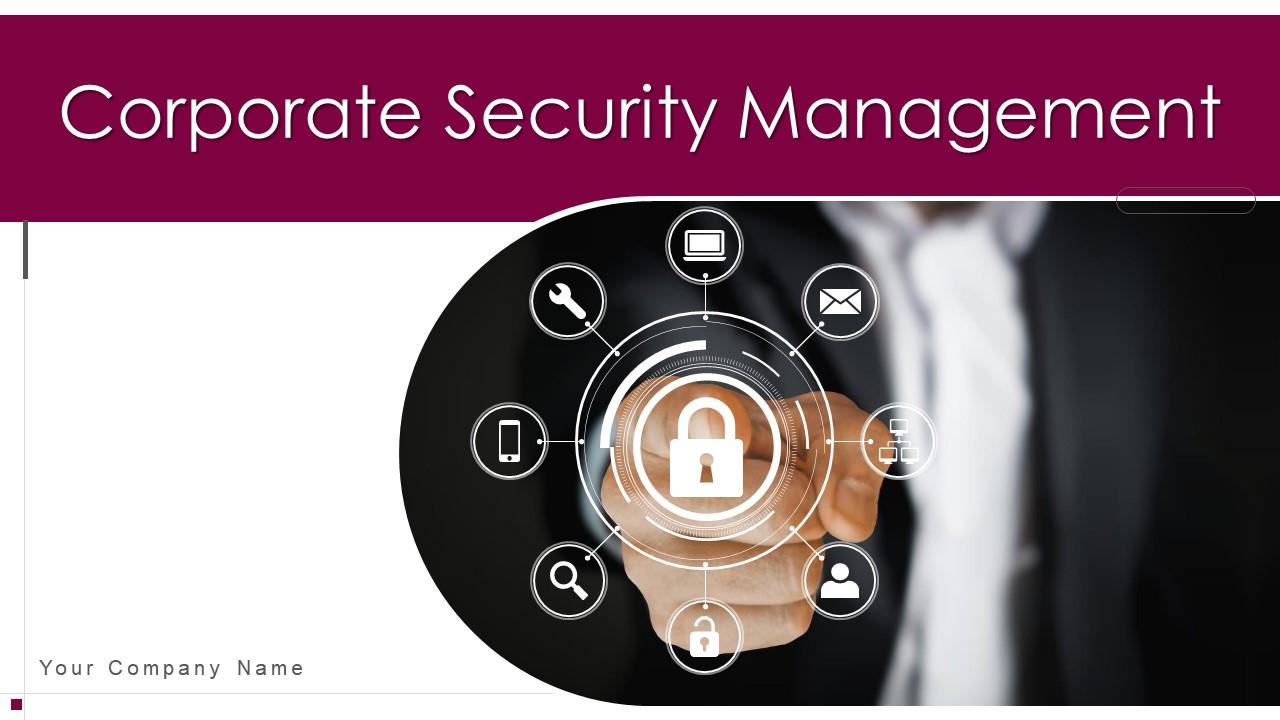From Cybersecurity to Physical Steps: Reinforcing Business Safety And Security in a Changing Globe
In today's quickly progressing digital landscape, the value of corporate security can not be overemphasized. As cyber risks come to be common and significantly sophisticated, companies should go past conventional cybersecurity actions to protect their properties and operations - corporate security. This is where the integration of physical protection measures ends up being crucial. By incorporating the toughness of both cybersecurity and physical safety and security, firms can create a detailed protection strategy that deals with the varied series of threats they deal with. In this conversation, we will certainly explore the altering hazard landscape, the demand to integrate cybersecurity and physical safety and security, the execution of multi-factor verification steps, the value of employee understanding and training, and the adaptation of safety procedures for remote labor forces. By examining these key areas, we will acquire valuable understandings right into just how organizations can reinforce their corporate safety in an ever-changing globe.
Recognizing the Altering Risk Landscape
The progressing nature of the modern globe requires a thorough understanding of the changing risk landscape for efficient company safety and security. It is critical for organizations to stay notified and adjust their security measures to deal with these evolving dangers.
One key element of comprehending the altering hazard landscape is recognizing the different types of threats that companies encounter. Cybercriminals are frequently developing brand-new techniques to make use of vulnerabilities in computer systems and networks. These risks can vary from malware and ransomware strikes to phishing frauds and social engineering methods. Furthermore, physical dangers such as burglary, criminal damage, and corporate reconnaissance stay widespread problems for companies.
Tracking and evaluating the threat landscape is essential in order to determine potential threats and susceptabilities. This entails staying updated on the current cybersecurity trends, assessing hazard knowledge reports, and conducting normal danger evaluations. By understanding the transforming risk landscape, companies can proactively implement appropriate safety and security procedures to alleviate risks and shield their possessions, credibility, and stakeholders.
Integrating Cybersecurity and Physical Security
Integrating cybersecurity and physical protection is vital for detailed company security in today's digital and interconnected landscape. As companies significantly rely upon modern technology and interconnected systems, the limits in between physical and cyber risks are coming to be obscured. To properly guard versus these risks, an alternative approach that integrates both cybersecurity and physical safety measures is necessary.
Cybersecurity focuses on securing electronic possessions, such as information, networks, and systems, from unauthorized accessibility, interruption, and burglary. Physical security, on the various other hand, encompasses procedures to secure physical assets, individuals, and facilities from threats and vulnerabilities. By incorporating these 2 domains, organizations can attend to susceptabilities and threats from both physical and digital angles, consequently enhancing their general security posture.
The combination of these 2 techniques permits a more detailed understanding of security dangers and makes it possible for a unified response to incidents. For example, physical gain access to controls can be boosted by incorporating them with cybersecurity methods, such as two-factor verification or biometric identification. Cybersecurity steps can be complemented by physical safety steps, such as surveillance cameras, alarms, and secure access factors.

Carrying Out Multi-Factor Authentication Procedures
As companies progressively prioritize extensive protection measures, one efficient strategy is the execution of multi-factor authentication procedures. Multi-factor verification (MFA) is a safety approach that requires individuals to give multiple forms of recognition to access a system or application. This approach adds an additional layer of defense by combining something the customer recognizes, such as a password, with something they have, like a safety or a fingerprint token.
By applying MFA, companies can significantly improve their safety pose - corporate security. Traditional password-based verification has its limitations, as passwords can be quickly compromised or forgotten. MFA reduces these risks by including an additional verification factor, making it more challenging for unapproved people to get accessibility to delicate information
There are a number of types of multi-factor authentication techniques offered, consisting of biometric verification, SMS-based confirmation codes, and hardware tokens. Organizations require to assess their particular requirements and choose one of the most ideal MFA solution for their demands.
Nonetheless, the application of MFA ought to be carefully intended and executed. It is crucial to strike an equilibrium in between safety and security and functionality to stop user stress and resistance. Organizations needs to additionally think about potential compatibility concerns and offer sufficient training and assistance to make sure a smooth shift.
Enhancing Worker Understanding and Training
To enhance business safety, organizations should prioritize boosting worker recognition and training. In today's quickly progressing threat landscape, employees play a critical function in safeguarding a company's delicate info and possessions. Unfortunately, lots of safety and security violations happen due to human mistake or absence of understanding. Organizations require to spend in detailed training programs to educate their workers regarding possible risks and the finest techniques for mitigating them.
Effective worker recognition and training programs ought to cover a vast array of subjects, including information defense, phishing strikes, social design, password health, and physical safety and security measures. These programs should be tailored to the details requirements and duties of various staff member duties within the company. Normal training sessions, workshops, and simulations can help employees develop the necessary skills and understanding to respond and recognize to safety and security hazards effectively.
Additionally, organizations need to urge a society of security recognition and supply ongoing updates and suggestions to maintain workers informed concerning the most recent threats and mitigation methods. This can be done via interior communication networks, such as newsletters, intranet portals, and e-mail campaigns. By fostering a security-conscious labor force, companies can considerably reduce the probability of security cases and secure their valuable possessions from unapproved gain access to or concession.

Adapting Security Steps for Remote Labor Force
Adapting business safety procedures to suit a remote workforce is necessary in making certain the defense of sensitive information and assets (corporate security). With the raising fad of remote job, companies must execute ideal safety steps to alleviate the dangers connected with this brand-new means of working
One essential aspect of adjusting protection actions for remote job is developing secure communication channels. Encrypted messaging systems and digital check my source exclusive networks (VPNs) can aid protect sensitive details and protect against unapproved accessibility. In addition, companies must implement the use of strong passwords a knockout post and multi-factor authentication to enhance the protection of remote accessibility.
One more essential factor to consider is the execution of safe and secure remote gain access to services. This involves providing staff members with safe and secure accessibility to corporate sources and information with virtual desktop computer facilities (VDI), remote desktop protocols (RDP), or cloud-based options. These modern technologies ensure that delicate information continues to be safeguarded while enabling staff members to do their functions successfully.

Last but not least, extensive safety awareness training is essential for remote employees. Training sessions need to cover best techniques for securely accessing and dealing with delicate info, identifying and reporting phishing efforts, and keeping the total cybersecurity health.
Verdict
Finally, as the danger landscape continues to progress, it is crucial for organizations to strengthen their protection measures both in the cyber and physical domains. Integrating cybersecurity and physical security, implementing multi-factor verification steps, and improving worker understanding and training are vital steps towards accomplishing robust corporate security. In addition, adjusting safety and security steps to accommodate remote labor forces is important in today's changing globe. By implementing these measures, companies can browse around here alleviate dangers and safeguard their useful possessions from potential hazards.
In this conversation, we will check out the changing threat landscape, the requirement to integrate cybersecurity and physical protection, the execution of multi-factor authentication measures, the value of worker understanding and training, and the adjustment of safety procedures for remote workforces. Cybersecurity actions can be matched by physical safety steps, such as security cameras, alarm systems, and secure gain access to factors.
As organizations significantly prioritize extensive protection procedures, one efficient strategy is the implementation of multi-factor authentication actions.In conclusion, as the danger landscape continues to develop, it is critical for organizations to enhance their security measures both in the cyber and physical domain names. Incorporating cybersecurity and physical protection, implementing multi-factor authentication actions, and enhancing employee understanding and training are necessary actions in the direction of accomplishing robust company security.
Comments on “A Blueprint for Corporate Security Excellence: Safeguarding Your Enterprise”